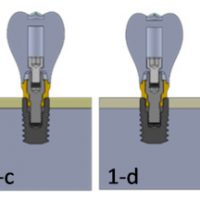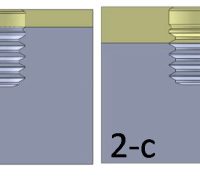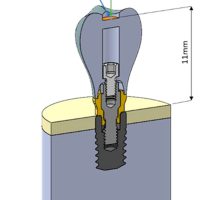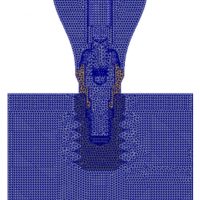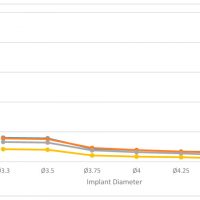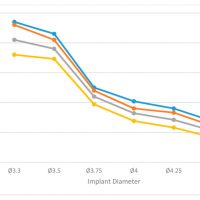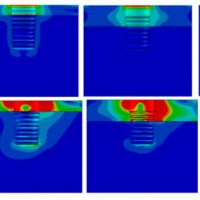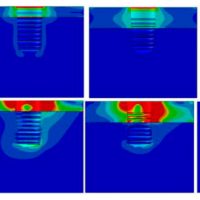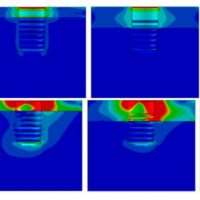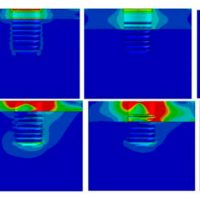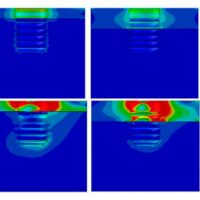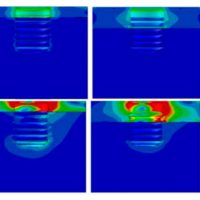- Autore:
- Eduardo Anitua
- Naiara Larrazabal Saez de Ibarra
- Iñigo Morales Martín
- Luis Saracho Rotaeche
Influence of Dental Implant Diameter and Bone Quality on the Biomechanics of Single-Crown Restoration. A Finite Element Analysis
Abstract
Background: Success of an implant-supported prosthesis is highly dependent on implant diameter and bone quality. The objective of this study is to assess these two variables under axial or 30° angulated loading.
Methods: The study was conducted using finite element model simulations of dental implants with an unchanging length of 6.5 mm and varying diameters of Ø3.3; Ø3.5; Ø3.75; Ø4, Ø4.25 and Ø4.75 mm. The implants were placed in an axial position and a 2 mm high straight transepithelial (intermediate abutment) was used to perform a single tooth restoration. Four bone quality scenarios, Type IV, III, II or 0-I bone, were simulated from a simplified model of the mandible. A 200N load was applied both axially and at a 30° angle to the occlusal surface of the prosthesis, which was 11 mm above the implant platform, and the equivalent Von Mises stress in the bone was analyzed.
Results: The maximum stress value was obtained for the Ø3.3 implant in Type IV bone (235 MPa), while the lowest value was obtained for the Ø4.75 implant and in Type 0-I bone (41 MPa). Regardless of the implant diameter, an improvement in bone quality produced a reduction in bone stress. The same effect was observed as the implant diameter was increased, being this effect even more pronounced.
Conclusions: Implant diameter has an important effect on bone stress, with a reduction in stress as the implant diameter increases.
Keywords: biomechanics; finite element analysis; short dental implant; single-unit implant.

 Español
Español
 English
English
 Français
Français
 Português
Português

